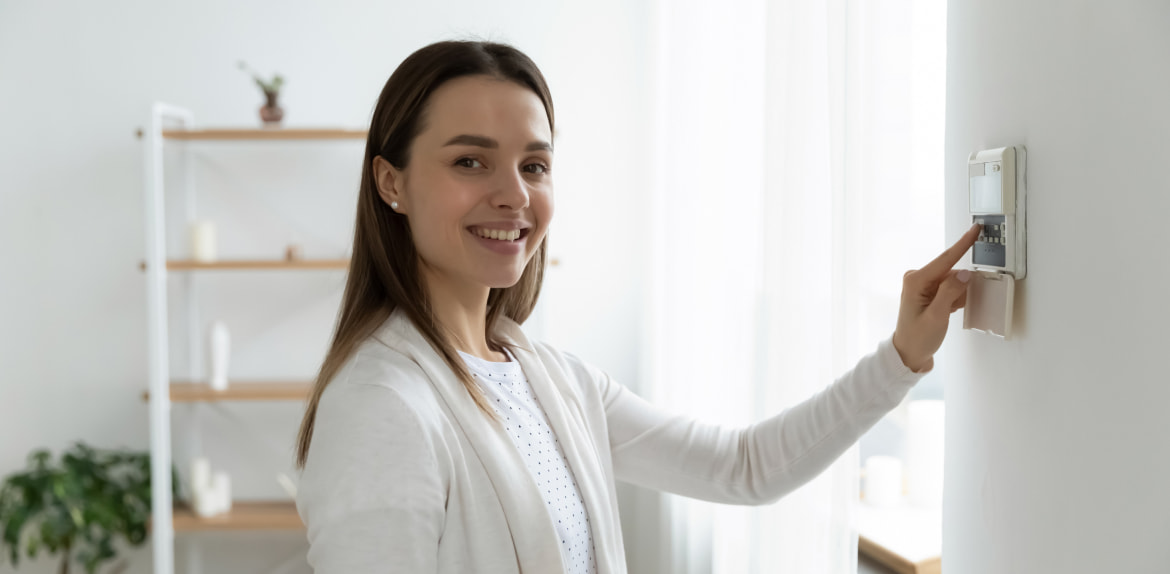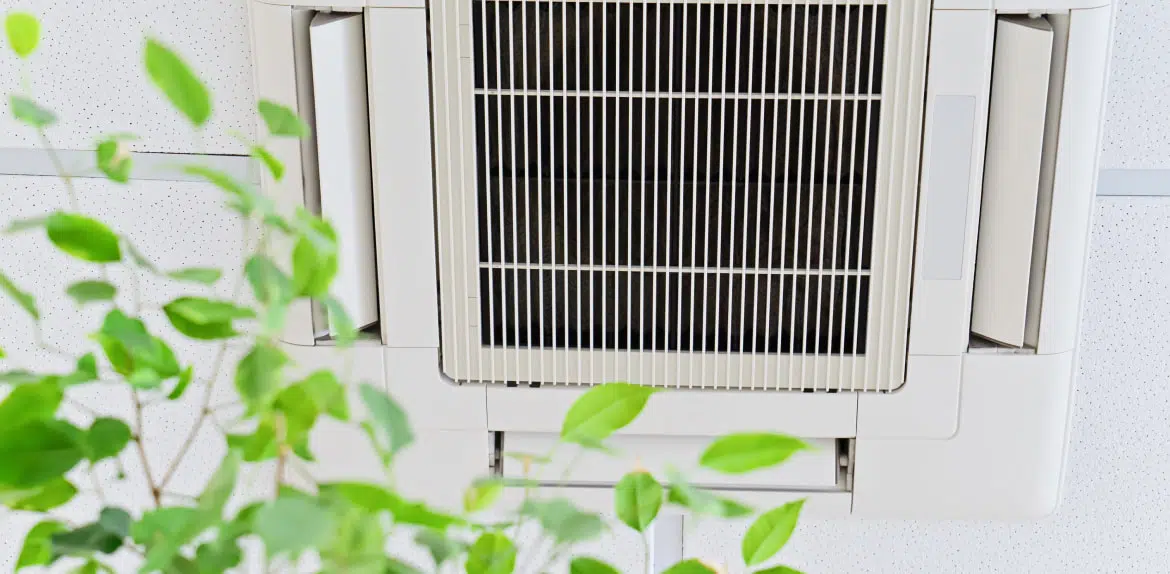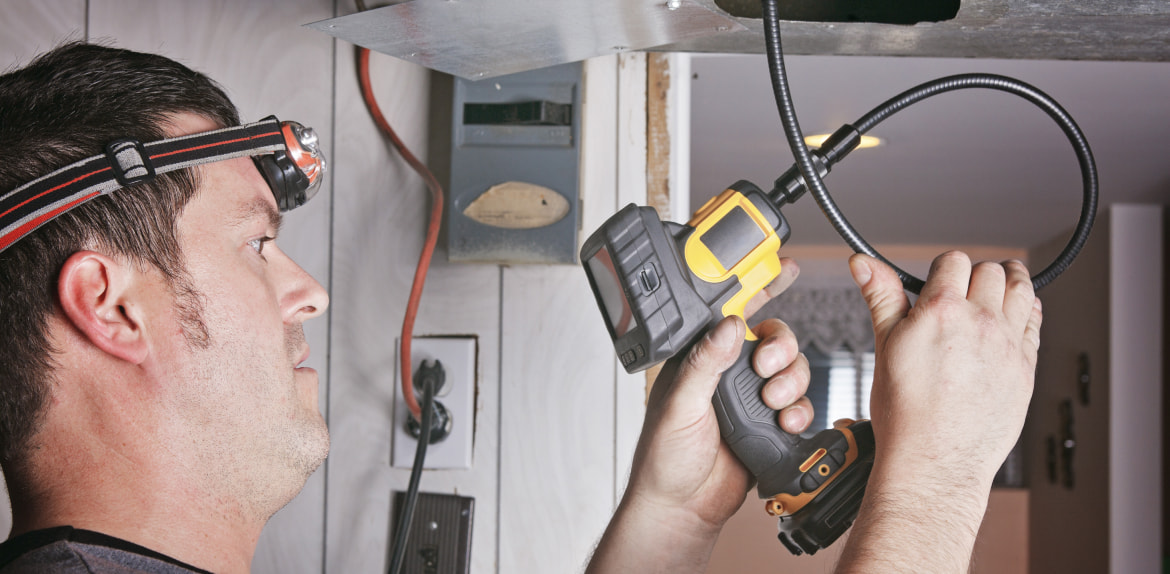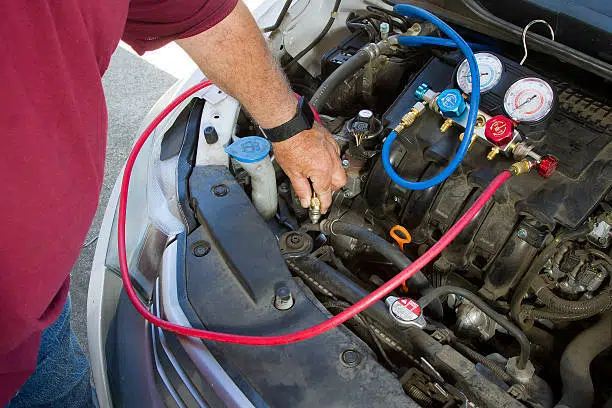
Table of Contents
Welcome to the ultimate guide to finding your comfort zone in the great Canadian indoors! Canada’s climate is as diverse as its landscapes, and staying cozy and comfortable at home throughout the year is a top priority. In this guide, we’ll explore the ideal indoor temperatures across seasons in Canada while addressing your concerns about indoor air quality.
Common Indoor Air Quality Concerns in Canada
At HVAC Service Solutions, we place a premium on the quality of the air within your homes. This is why we want to start with a consideration of the specific concerns that you may have about maintaining optimal indoor air quality in your place.
Temperature Extremes
Canada’s geography spans from the frosty Arctic tundra to the balmy coasts of British Columbia, creating a vast range of climate conditions. You are probably well aware of the challenges posed by extreme temperatures, both hot and cold.
During the harsh winter months, the challenge lies in staying warm without driving up energy bills. Conversely, in the summer, high temperatures and humidity levels can make indoor spaces uncomfortable. Thus, finding ways to cool down and maintain a comfortable indoor temperature without over-reliance on energy-intensive cooling systems is a priority.
Air Pollution and Indoor Air Quality
Urban areas in Canada, like any major metropolis, contend with air pollution, which can seep indoors. The infiltration of outdoor pollutants, such as fine particulate matter (PM2.5), volatile organic compounds (VOCs), and other allergens, into indoor spaces is a significant concern. It’s important to seek ways to mitigate your indoor air quality issues to protect your health and well-being.

Humidity Levels and Health
Canada’s climate extremes extend to indoor humidity levels. The arid indoor air during winter can lead to discomfort and health issues, while excessive humidity in summer can encourage mold growth and impact respiratory health.
We understand you are cautious about maintaining optimal humidity levels year-round. We strive to help you prevent the drying effects of indoor heating during winter and combat the oppressive humidity of summer.
Allergens and Pollen Control
Unfortunately, seasonal allergies affect many of us. Controlling indoor allergens like pollen, dust mites, and pet dander is a priority for those seeking relief.
Indoor allergens can trigger allergic reactions and respiratory issues. Canadians aim to safeguard their indoor environments against allergens, particularly during peak allergy seasons. Professional HVAC services including air purification and allergen control, can help you breathe easier and reduce allergy symptoms.
Ventilation for Fresh Air
Ensuring proper ventilation is essential for maintaining indoor air quality. One of the biggest indoor air quality concerns in Canada is about achieving a balance between efficient ventilation and retaining conditioned indoor air.
Fresh air circulation is vital, especially in tightly sealed homes to remove indoor pollutants. However, energy-efficient ventilation solutions are sought after to maintain indoor comfort without skyrocketing energy bills. Regular HVAC system maintenance can help achieve the perfect balance between fresh air and energy savings.
Health and Well-being
We understand that you are not merely seeking a comfortable indoor environment; you are striving for a healthy sanctuary where they can thrive, free from the adverse effects of poor air quality. Poor air quality can lead to a range of health issues, from respiratory problems to decreased productivity. Meanwhile, investing in a healthy indoor environment can contribute to a higher quality of life.
In the pursuit of health-conscious indoor living, HVAC Service Solutions stands as your ally. Our purification systems ensure clean, crisp air, while our ventilation solutions offer vitality. Our meticulous duct cleaning services eliminate contaminants and reduce the presence of allergens like pollen, pet dander, and mold spores. Together, we create an indoor environment where health thrives.
Find out more about our indoor air quality services via the link below.
Ideal Indoor Temperatures for Your Comfort

Achieving the perfect indoor temperature is more complicated than it seems, especially in Canada’s diverse climate. In this part of our article, we’ll explore the science of staying comfortable year-round. Whether it’s braving the icy winters, welcoming the change of seasons, or keeping your cool during the sweltering summer, we’ve got you covered.
Winter Months: Staying Warm and Cozy
The winter months in Canada are characterized by biting cold and snowy landscapes. To stay cozy, aim for an indoor temperature between 18°C and 21°C (64°F to 70°F). It’s a delicate balance that ensures warmth without inflating heating bills. Achieving this balance often relies on efficient heating systems, proper insulation, and well-sealed windows and doors.
Transition Seasons: Balancing Comfort and Savings
Spring and fall bring unpredictable weather, making it essential to strike a balance between comfort and savings. Indoor temperatures between 16°C and 20°C (61°F to 68°F) are comfortable while helping you save on energy costs. Programmable thermostats and energy-efficient HVAC systems are your allies in achieving this equilibrium.
Summer Months: Beating the Heat
Summers in Canada can bring sweltering heatwaves, especially in southern regions. To stay comfortable indoors, aim for temperatures between 23°C and 26°C (73°F to 79°F). Air conditioner systems become your trusted companions during these months, but they should be used judiciously to keep energy consumption in check.
Find out how to choose the correct air conditioner for your home in our previous article.
The Ideal Indoor Temperature for Your House in Canada in Every Season
Season | Ideal Indoor Temperature Range | Key Indoor Air Quality Considerations |
|---|---|---|
Winter (Dec-Feb) | 18°C to 21°C (64°F to 70°F) | – Effective air filtration and purification.
– Humidity balance.
– Heating system maintenance. |
Transition Seasons (Spring and Fall) | 16°C to 20°C (61°F to 68°F) | – Controlled ventilation for fresh air.
– Allergen control (especially in spring). |
Summer (Jun-Aug) | 23°C to 26°C (73°F to 79°F) | – Efficient air conditioner system.
– Humidity control.
– Allergen control.
– Air purification as needed. |
In summary, the perfect indoor air quality varies from season to season in Canada. Achieving it depends on factors such as effective air filtration, proper ventilation, humidity control, and allergen management. HVAC Service Solutions is your partner in maintaining the perfect indoor temperature and air quality throughout the year, offering expert solutions tailored to Canada’s diverse climate.
What Is the Best Temperature for an Empty House?
When your house is unoccupied, finding the optimal indoor temperature is key to saving on energy bills while ensuring your home remains in good condition. Let’s consider how to maintain the ideal temperature for an empty house depending on different circumstances.
Short-Term Absence (Up to a Few Days)
For short trips or weekends away, it’s wise to adjust your thermostat to a temperature closer to the outdoor conditions. During the summer, you can set the thermostat a few degrees higher than your usual comfort level (around 28°C or 82°F) to conserve energy. In the winter, a temperature around 10°C to 13°C (50°F to 55°F) is often sufficient to prevent freezing pipes without overworking your heating system.
Extended Absence (Several Weeks or More)
If you’ll be away for an extended period, it’s essential to take extra precautions. During the summer, consider setting your thermostat to a higher temperature, typically around 32°C to 35°C (90°F to 95°F), to reduce energy consumption. In the winter, setting it to around 7°C to 10°C (45°F to 50°F) is suitable to prevent freezing pipes. Additionally, it’s advisable to shut off the water supply to prevent any potential leaks.
Smart Thermostats for Efficiency
Leveraging smart thermostats can be an excellent choice for managing the temperature in an empty house. These devices allow you to remotely control your HVAC system, enabling you to adjust the temperature based on your travel plans. You can set the thermostat to return to your preferred comfort levels before your arrival, ensuring a comfortable homecoming without wasting energy in your absence.
Absence Duration | Season | Recommended Temperature Range |
|---|---|---|
Short-Term (Up to a Few Days) | Winter | 10°C to 13°C (50°F to 55°F) |
Summer | Approximately 28°C (82°F) or higher | |
Extended (Several Weeks or More) | Winter | 7°C to 10°C (45°F to 50°F) |
Summer | 32°C to 35°C (90°F to 95°F) |
Keep in mind that the ideal temperature may vary based on your home’s characteristics. Well-insulated homes may require less temperature adjustment, while older or less insulated homes may need more attention to prevent extreme temperature fluctuations.
HVAC Service Solutions As Your Indoor Air Quality Partner

At HVAC Service Solutions, we are more than just an HVAC company; we are your trusted partner in creating the perfect indoor environment. With our comprehensive range of indoor air quality services, we are dedicated to enhancing your comfort, health, and overall well-being. Explore how our expert services can elevate your indoor experience.
- Humidity Control Solutions: Our humidity control solutions in Canada provide year-round moisture management, preventing dry, uncomfortable air during winter and excess humidity in the summer. By maintaining ideal humidity levels, our systems ensure a more comfortable indoor temperature, reducing the strain on your heating and cooling systems, and helping you save on energy costs.
- HEPA Filtration: For those with heightened sensitivity to allergens, our HEPA filtration systems offer an extra layer of protection. These systems are highly effective at capturing even the tiniest particles, including pet dander, pollen, and mold spores. By reducing allergen levels, our HEPA filtration enhances indoor air quality, making it easier to maintain a comfortable indoor temperature without compromising on health.
- Ventilation Systems: Proper ventilation is essential for maintaining fresh indoor air. Our ventilation systems are expertly designed to ensure a constant supply of oxygen-rich air while minimizing energy loss. By facilitating a healthier exchange of indoor and outdoor air, our systems contribute to an improved indoor environment.
- Duct Cleaning: Over time, your HVAC ducts can accumulate dust, allergens, and contaminants, diminishing indoor air quality and reducing system efficiency. Our meticulous duct cleaning services eliminate these unwanted intruders, allowing your HVAC system to function optimally. Clean ducts help maintain a comfortable indoor temperature by ensuring that conditioned air can flow freely and efficiently throughout your home.
By ensuring that your HVAC system operates at peak performance, our services contribute to a more comfortable, energy-efficient, and healthy indoor environment. Choose HVAC Service Solutions as your indoor air quality partner and elevate your home to a new level of comfort and well-being.
Conclusion
Navigating Canada’s seasons requires a keen understanding of indoor temperature needs. From the warmth sought during winter (18°C to 21°C) to the cooling embrace of summer (23°C to 26°C) and the cost-effective balance in transition seasons (16°C to 20°C), maintaining the perfect indoor climate is your key to comfort and well-being.
Ready to experience the perfect indoor environment? Contact us via the link below for a consultation and transform your home into a haven of comfort and clean air.
Share



















